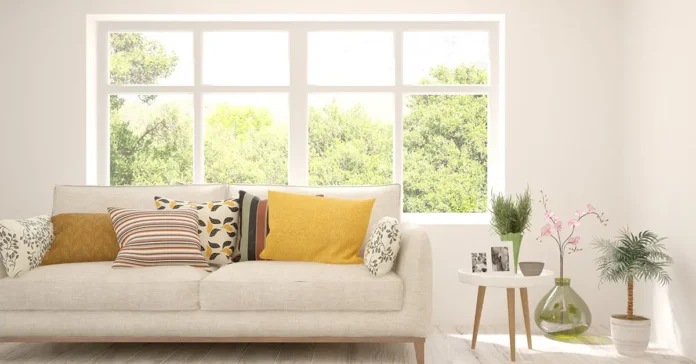Decluttering your living room is essential for creating a space that feels fresh and organized. A clutter-free living room not only enhances the look of your home but also improves your daily comfort. Whether you’re preparing for a relocation or simply want to refresh your space, decluttering helps you start anew. Using box storage and self-storage options can make this process easier.
Box storage allows you to sort and keep items neatly while you declutter. Self-storage units offer extra space for items you don’t need daily but want to keep safe. Utility lockers are great for smaller items and can be a quick solution during the decluttering process. By taking these steps, you’ll enjoy a more inviting and functional living room, making your home feel more relaxing and well-organized.
Declutter Living Room Step 1: Set Clear Goals
Before diving into decluttering your living room, it’s crucial to set clear goals. Start by defining what you want to achieve with the decluttering process. Do you want more space, a tidier look, or easier access to items? Knowing your goals will help you stay focused and motivated. Next, plan the scope of your decluttering efforts. Decide if you want to tackle the entire living room at once or break it down into smaller sections.
For example, you might start with just the coffee table or bookshelves. This planning helps prevent feeling overwhelmed and ensures you can see progress step-by-step.
Declutter Living Room Step 2: Gather Supplies
Once your goals and plan are set, gather the necessary supplies. Essential items include trash bags for discarding unwanted items, boxes for sorting items you want to keep, and labels to help categorize what you’ve sorted. Having these supplies ready will streamline the process. Use trash bags to quickly and easily dispose of items that are broken or no longer needed. Boxes are great for sorting and storing items that you want to keep or donate. Labeling helps you keep track of what’s in each box and where it should go, making the reorganization easier.
Declutter Living Room Step 3: Start with One Area
To avoid feeling overwhelmed, start decluttering in one specific area of your living room. Choose a section like the coffee table, bookshelves, or a particular corner. Focus on that area until it’s complete before moving on to another section. This method keeps the task manageable and allows you to see immediate results, which can be very motivating.
By concentrating on one space at a time, you can better organize and make decisions about what to keep, discard, or donate. This step-by-step approach helps maintain focus and prevents the process from becoming too daunting.
Declutter Living Room Step 4: Sort Items into Categories
Sorting items into clear categories is essential for effective decluttering. Start by dividing everything into three main groups: keep, donate, and discard.
- Keep: These are items you use regularly or hold sentimental value. Ensure they have a designated space and consider if they fit your current needs and lifestyle.
- Donate: Choose items that are in good condition but no longer needed. Donating clothes, books, and household goods can benefit others and help reduce clutter in your living room.
- Discard: Items that are broken, outdated, or no longer useful should be thrown away. Make sure to dispose of them responsibly, recycling whenever possible.
When deciding which category an item belongs to, ask yourself if you’ve used it in the past year and if it adds value to your life. Be honest and practical to avoid keeping unnecessary items.
Declutter Living Room Step 5: Declutter Surfaces
Clear surfaces like countertops, tables, and shelves to create a more open and inviting living space. Start by removing everything from these areas and evaluate each item individually.
- Organize: Once you’ve cleared the surfaces, sort the items you want to keep and group similar items together. Use storage solutions like trays or organizers to keep things tidy and accessible.
- Discard: Items that don’t belong or are rarely used should be removed. Consider donating or discarding these items to reduce clutter and free up space.
Maintaining clear surfaces helps create a more organized and aesthetically pleasing environment. Regularly check these areas to prevent them from becoming cluttered again.
Step 6: Declutter Living Room by Organizing Storage Spaces
Effective organization of storage spaces is key to keeping your living room tidy. Utilize cabinets, drawers, and baskets to maximize storage and maintain order.
- Cabinets and Drawers: Use these for items that need to be stored out of sight but still within reach. Organize contents with dividers or small bins to keep everything in its place.
- Baskets: Baskets are great for grouping similar items together, like magazines, remote controls, or toys. They are versatile and can be placed on shelves, under tables, or in closets.
Best Practices for Organizing:
- Label Storage: Clearly label bins and baskets so everyone in the household knows where things belong.
- Prioritize Accessibility: Place frequently used items in easily accessible spots and less-used items in higher or lower storage.
- Regular Maintenance: Periodically reassess your storage solutions to ensure they still meet your needs and adjust as necessary.
Step 7: Deal with Paper Clutter
Paper clutter, including magazines, mail, and paperwork, can quickly pile up and overwhelm your living room. Start by sorting through all the paper items. Create separate piles for things to keep, recycle, or shred. For magazines and newspapers, decide if they are still relevant or if they can be discarded. Mail should be sorted into categories such as bills, personal correspondence, and junk mail.
To manage paperwork effectively, create a simple filing system. Use folders or binders to organize important documents like receipts, warranties, and personal records. Label each folder clearly to make it easy to find what you need. For papers that you don’t need to keep, recycle or shred them to reduce clutter. Regularly go through your papers to prevent new clutter from building up.
Step 8: Reassess Furniture Arrangement
The arrangement of your furniture plays a key role in the functionality and feel of your living room. Begin by assessing the current layout. Look for areas where the space feels cramped or where the flow is obstructed. Arrange furniture to create a natural flow of movement and maximize the usable space.
Consider removing or replacing any pieces that no longer fit your needs or the style of your living room. If a piece of furniture is rarely used or too bulky, it may be better to remove it. For items that stay, think about rearranging them to improve accessibility and comfort. Ensure that your seating area is inviting and that there is enough space for walking.
Step 9: Add Storage Solutions
Adding effective storage solutions can help keep your living room organized and clutter-free. Incorporate shelves, baskets, and other storage options that fit your space and style. Floating shelves are great for displaying books and decorative items without taking up floor space. Baskets can be used to store small items like toys or magazines.
Choose storage solutions that complement your living room’s decor while meeting your organizational needs. For instance, a stylish storage ottoman can provide extra seating while hiding clutter. Regularly reassess your storage solutions to ensure they continue to work for you as your needs change. By integrating thoughtful storage options, you can maintain a tidy, functional living room.
Step 10: Maintain New Space
To maintain your newly decluttered living room, establish regular cleaning and decluttering habits. Set aside time each week to tidy up and ensure everything is in its place. Create a routine to check and manage clutter, such as sorting mail or putting away items after use. Invest in storage solutions like bins and shelves to keep things organized. Make it a habit to reassess your living room monthly to prevent clutter from building up again. By staying consistent with these practices, you can enjoy a clean and organized living space for the long term.
Final Words
In conclusion, maintaining a decluttered living room requires consistent effort and smart organization. By establishing regular cleaning routines and decluttering habits, you can keep your space looking fresh and organized. Use effective storage solutions and regularly assess your living area to ensure that clutter does not accumulate.
Incorporate habits like sorting mail and tidying up daily to prevent mess from building up. A well-maintained living room not only enhances the aesthetics of your home but also contributes to a more relaxing and functional environment. Embrace these practices to enjoy a clean, comfortable space that supports your lifestyle and well-being.
FAQs
A1: The first step is to set clear goals for what you want to achieve and plan how to tackle the space.
A2: You’ll need trash bags, boxes, labels, and possibly storage bins for sorting and organizing items.
A3: Begin with one small area or section of the room to make the task feel more manageable.
A4: Sort items into three categories: keep, donate, and discard. This helps streamline your decision-making process.
Q5: What should I do with papers and magazines?
A5: Sort through them, create a filing system for important papers, and recycle outdated or unnecessary ones.
A6: Regularly clear off surfaces like tables and shelves, and only keep essential items on them.
A7: Use baskets, bins, and shelves to organize items, and make sure everything has a designated place.
A8: Arrange furniture to enhance space and flow, considering how you use the room and ensuring easy movement.
A9: Reassess your organization strategies and make adjustments. Consider additional storage solutions if needed.
A10: Establish regular cleaning habits, make a routine for tidying up, and periodically review and organize your space to keep it clutter-free.








